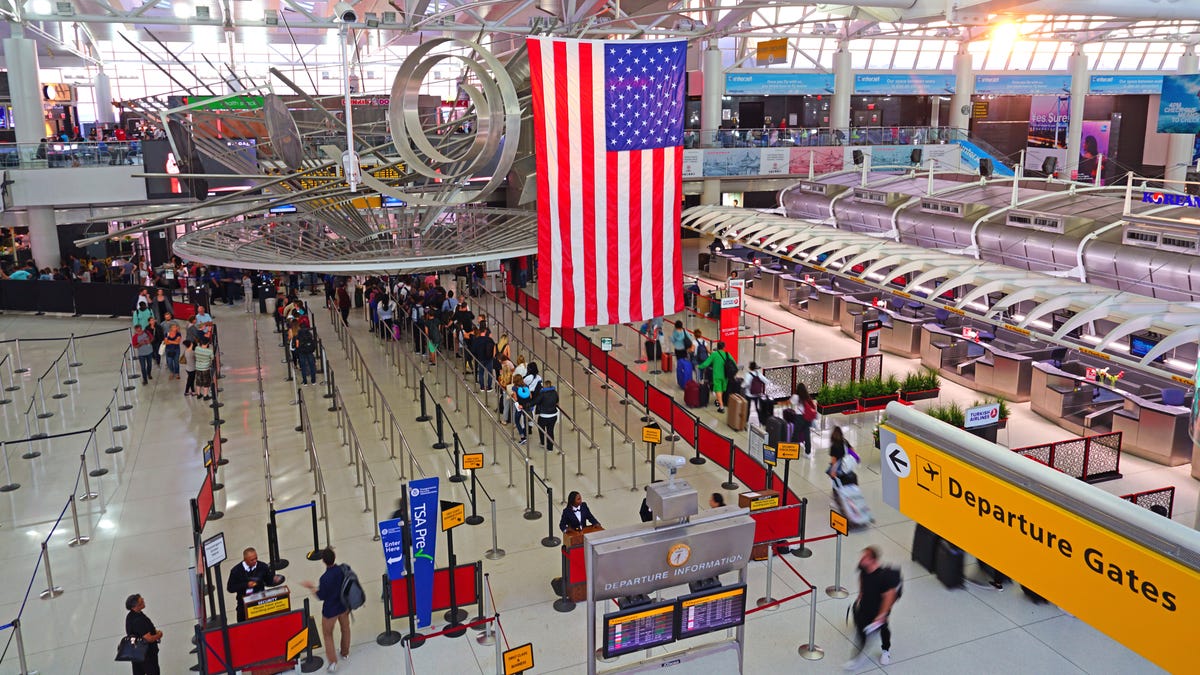New COVID Screening Policies for International Passengers Flying Into U.S. - 3 minutes read
 Photo : EQRoy ( Shutterstock )
Photo : EQRoy ( Shutterstock )Nearly six months ago, all the way back in mid-March, the Trump administration issued an order banning travel from Europe, Brazil, Iran and China. There was an exception to this rule: U.S. citizens, lawful permanent residents and their family members have been permitted to reenter the country as long as they flew into one of 15 designated American airports , and underwent an enhanced entry screening. But on Monday, September 7, this policy changed, according to Yahoo News, which broke the story. Here’s what you need to know about the updated travel regulations.
Advertisement
What has changed about COVID screening policies?
In short, those with permission to reenter the U.S. will no longer have to fly through one of these 15 screening airports en route to their final destination:
Boston-Logan International Airport (BOS), Massachusetts
Chicago O’Hare International Airport (ORD), Illinois
Dallas/Fort Worth International Airport (DFW), Texas
Detroit Metropolitan Airport (DTW), Michigan
Daniel K. Inouye International Airport (HNL), Hawaii
Fort Lauderdale-Hollywood International Airport (FLL), Florida
George Bush Intercontinental Airport (IAH), Texas
Hartsfield-Jackson Atlanta International Airport (ATL), Georgia
John F. Kennedy International Airport (JFK), New York
Los Angeles International Airport, (LAX), California
Miami International Airport (MIA), Florida
Newark Liberty International Airport (EWR), New Jersey
San Francisco International Airport (SFO), California
Seattle-Tacoma International Airport (SEA), Washington
Washington-Dulles International Airport (IAD), Virginia
When the new policy takes effect at 12:01 a.m. on Monday, September 14th, it will end the mandatory COVID screening requirement for passengers arriving from outside the country.
Advertisement
What does this mean for public health?
Great question—after all, we are still in the midst of a global pandemic. Let’s look back at the policy that’s been in place for the past several months. Basically, passengers returning to the U.S. have been sent to airport screeners who took their temperature and asked a series of health-related questions, including whether they’ve been experiencing any of the classic COVID-19 symptoms.
G/O Media may get a commission TaoTronics 1500W Ceramic Heater Buy for $46 from TaoTronics Use the promo code WARM006
Part of the screening process requires travelers to provide their contact information, in the event that it’s needed for contact tracing purposes. But under the updated policy, if a passenger may have potentially been exposed to someone with COVID-19, it will make getting in touch with them considerably more difficult (or at least more time-consuming).
Advertisement
While the new policy will likely make travel more convenient for those flying internationally, it doesn’t seem like the best move from a public health perspective. At this point, we’re not really in a p lace where we can afford to make contact tracing harder. And while not everyone with COVID has a fever (and vice versa), the airport health screenings at least provided some attempt to help slow the spread of the novel coronavirus, and acknowledge the continuing global pandemic.
Source: Lifehacker.com
Powered by NewsAPI.org